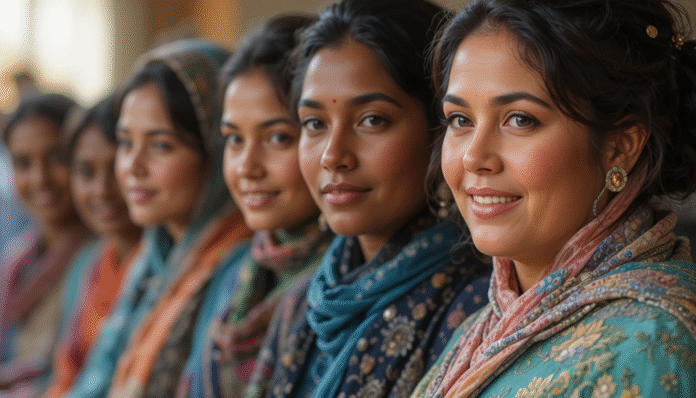Introduction: Reflection on Resolution 1325
In October 2000, the United Nations Security Council adopted Resolution 1325, marking a pivotal moment in the acknowledgment of women’s roles in peace and security matters. This resolution is significant as it urges member states to increase the participation of women in conflict prevention, resolution, and peacebuilding processes. It emphasizes the need for protecting women and girls from gender-based violence in situations of armed conflict, thus laying a foundation for a more inclusive approach to security that recognizes women’s contributions and vulnerabilities.
As we reflect on the past 25 years since the adoption of Resolution 1325, it becomes essential to convene the Security Council and assess both the progress made and the ongoing challenges faced by women in conflict zones. The agenda established through this resolution sought to empower women and ensure their voices are heard in peace negotiations. However, the realities on the ground illustrate a complex picture, revealing that the commitments made within the framework of this landmark agenda have not fully translated into meaningful change for many women around the world.
In various regions where conflict persists, women continue to experience severe disadvantages, including limited access to resources, representation, and protection. The promise of Resolution 1325 aimed to alter this narrative, but obstacles remain, including entrenched societal norms and insufficient political will. By evaluating the impact of this resolution, it is essential to highlight both the strides made towards inclusivity in security frameworks and the stark discrepancies that still exist today. This reflection serves as a crucial foundation for understanding the ongoing struggle for gender equality in peace and security efforts, and the necessity for continued advocacy and action.
Reality Check: Evolving Challenges for Women in Conflict Zones
Women in conflict zones have faced a myriad of challenges that have evolved over the past two decades. While the Women, Peace, and Security (WPS) agenda was established to enhance women’s rights and participation in peace processes, the grim reality in regions such as Gaza, Afghanistan, Sudan, Haiti, and Myanmar highlights a significant regression in these rights. In many areas, the prevalence of violence against women has intensified, often perpetuated by state and non-state actors alike, rendering women highly vulnerable.
For instance, in Afghanistan, the Taliban’s return to power has led to a stark decline in women’s rights, ushering in policies that restrict access to education, healthcare, and employment. Reports indicate that violent reprisals against women speaking out have surged, with many forced into silence amidst a climate of fear. Similarly, the situation for women in Gaza remains dire, where ongoing hostilities contribute to heightened rates of domestic violence, sexual assault, and displacement.
Sudan’s recent conflicts have also exacerbated the challenges women face, particularly in conflict-affected regions where widespread sexual violence is employed as a weapon of war. This pattern not only inflicts immediate physical and psychological harm but also contributes to long-term societal issues, as survivors often struggle to access crucial healthcare and support services.
In Haiti, systemic instability has given rise to gang violence, which disproportionately affects women and girls, subjecting them to sexual exploitation and abuse. The inability of local law enforcement to protect citizens further exacerbates their plight, highlighting the urgent need for both national and international support.
Meanwhile, in Myanmar, the military coup has resulted in heightened violence against women, particularly those in ethnic minority groups who are already marginalized. Reports from various human rights organizations underscore how women are targeted for their activism and participation in anti-regime movements, facing arrest, torture, and even extrajudicial killings.
Additional factors such as funding cuts from international agencies and political resistance to women’s rights initiatives have compounded these challenges. As a result, the call for urgent action to promote and safeguard women’s rights in these environments is more crucial than ever. Addressing these issues is not only a matter of justice but also an essential component of sustainable peacebuilding efforts.
Call to Action: Addressing the Gaps and Implementing Solutions
The Women, Peace, and Security (WPS) agenda has made significant strides over the past 25 years, but substantial gaps remain that require urgent attention and action. The recent Security Council discussions have clearly articulated critical calls to action that aim to address these deficiencies and enhance the effectiveness of the WPS framework.
One of the primary recommendations is the establishment of binding targets for women’s representation in peace processes. Ensuring that women occupy decision-making roles is not merely a matter of equality; it is fundamental to the success of peace initiatives. Diverse perspectives lead to more comprehensive and sustainable solutions to conflicts. Setting specific quotas or benchmarks could drive meaningful change, as it would hold governments and organizations accountable for including women’s voices in critical discussions.
Moreover, the necessity of a ‘gender data revolution’ has been emphasized as an essential component to shed light on women’s experiences and contributions in conflict and post-conflict settings. Data collection that is disaggregated by sex is crucial for understanding the unique challenges women face. It not only informs policy but also empowers women by providing them with the evidence needed to advocate for their rights. By investing in robust data systems, stakeholders can identify gaps in programming and resource allocation, ensuring that women’s needs are prioritized in the peacebuilding process.
Lastly, increased funding directed toward women-led initiatives is vital for the success of the WPS agenda. Women’s organizations are often the frontline responders in conflict situations, yet they remain underfunded and marginalized. Allocating adequate financial resources to support these initiatives is essential for enabling women to lead peacebuilding efforts effectively. This financial commitment will foster an environment where women can contribute fully to conflict resolution and reconstruction activities.
Addressing these gaps through targeted actions will not only transform the WPS agenda but will also contribute to more stable, peaceful societies globally. Immediate action on these fronts is imperative for a significant leap forward in promoting gender equality within the broader peace and security framework.
Conclusion: The Path Forward Amidst Polarization
The last 25 years have highlighted extensive debates regarding women, peace, and security, particularly within the context of the United Nations Security Council. The discussions have unveiled a spectrum of polarized views, often reflecting wider geopolitical tensions. Despite these divisions, there remains a notable consensus surrounding the crucial need for enhanced women’s inclusion and protection in conflict settings. This agreement serves as a foundation from which to build more effective strategies that promote the active participation of women in peace processes.
The challenges imposed by political polarization cannot be overlooked. Disparate views among member states frequently hinder the advancement of robust policies aimed at integrating women into peace and security initiatives. The lack of cohesion undermines the commitment to uphold and strengthen the gender perspectives critical for restoring peace in war-torn regions. A united approach is essential to transition from mere commitments to actionable results that can withstand the adversities posed by socio-political divides. As such, developing a clear framework that aligns these diverse perspectives is imperative for meaningful progress.
Moving forward, it is vital that advocacy for women’s roles in peace negotiations remains a priority. Historical evidence suggests that involving women in decision-making processes leads to more comprehensive and lasting resolutions. Therefore, the call for promoting diverse representation in peace talks should also resonate within the broader context of international relations. Continuous efforts must aim to empower women, ensuring their voices are not only heard but also influence outcomes. These approaches will not only serve women directly affected by conflict but will contribute significantly to building sustainable peace systems globally.


